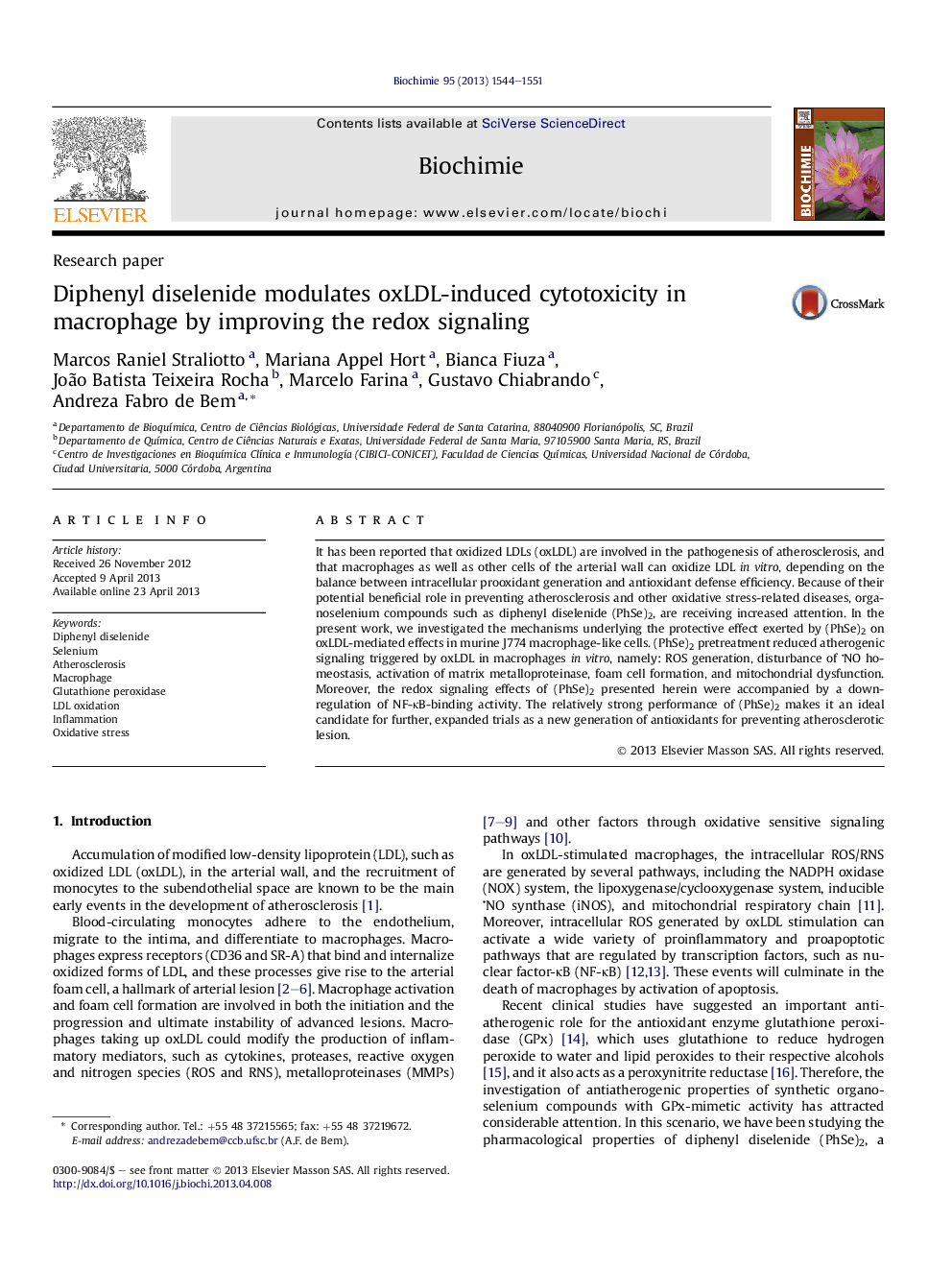| Article ID | Journal | Published Year | Pages | File Type |
|---|---|---|---|---|
| 10803700 | Biochimie | 2013 | 8 Pages |
Abstract
It has been reported that oxidized LDLs (oxLDL) are involved in the pathogenesis of atherosclerosis, and that macrophages as well as other cells of the arterial wall can oxidize LDL in vitro, depending on the balance between intracellular prooxidant generation and antioxidant defense efficiency. Because of their potential beneficial role in preventing atherosclerosis and other oxidative stress-related diseases, organoselenium compounds such as diphenyl diselenide (PhSe)2, are receiving increased attention. In the present work, we investigated the mechanisms underlying the protective effect exerted by (PhSe)2 on oxLDL-mediated effects in murine J774 macrophage-like cells. (PhSe)2 pretreatment reduced atherogenic signaling triggered by oxLDL in macrophages in vitro, namely: ROS generation, disturbance of NO homeostasis, activation of matrix metalloproteinase, foam cell formation, and mitochondrial dysfunction. Moreover, the redox signaling effects of (PhSe)2 presented herein were accompanied by a downregulation of NF-κB-binding activity. The relatively strong performance of (PhSe)2 makes it an ideal candidate for further, expanded trials as a new generation of antioxidants for preventing atherosclerotic lesion.
Keywords
Related Topics
Life Sciences
Biochemistry, Genetics and Molecular Biology
Biochemistry
Authors
Marcos Raniel Straliotto, Mariana Appel Hort, Bianca Fiuza, João Batista Teixeira Rocha, Marcelo Farina, Gustavo Chiabrando, Andreza Fabro de Bem,
